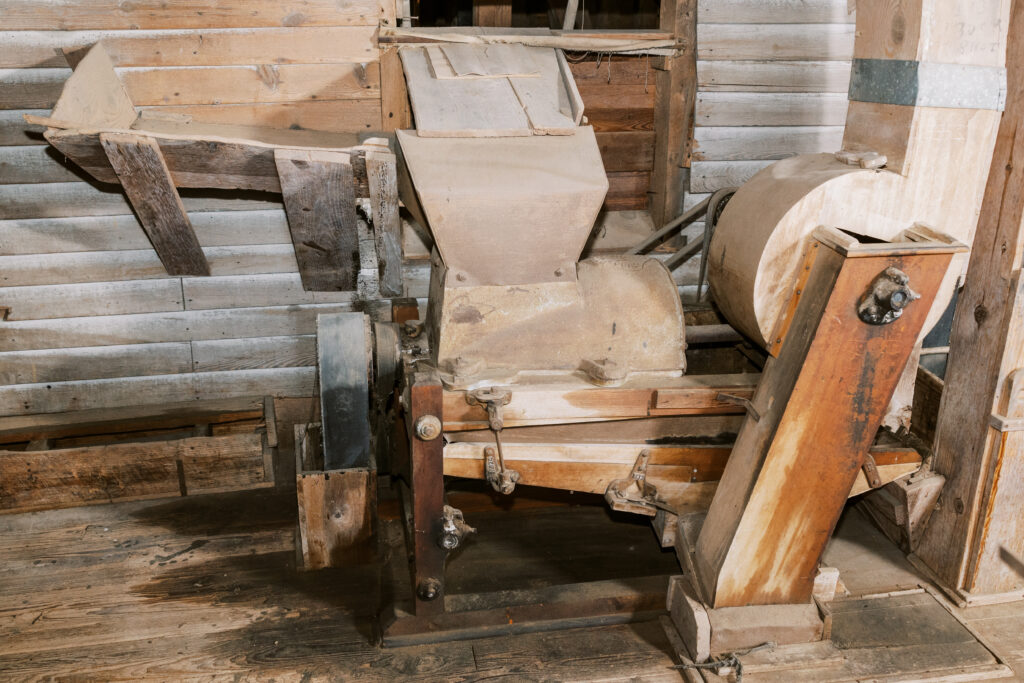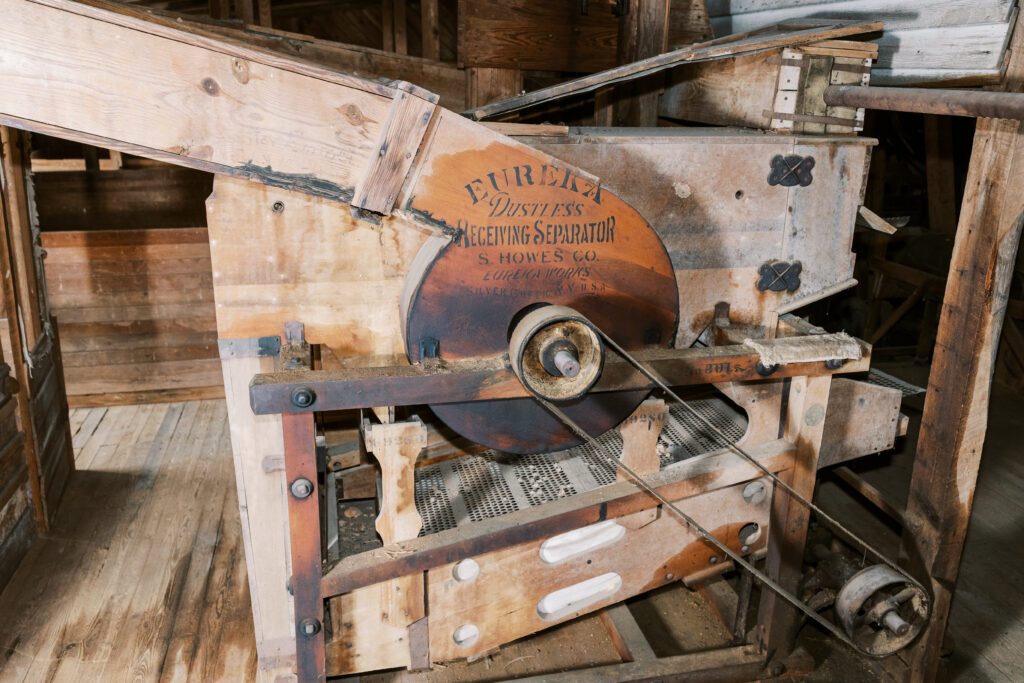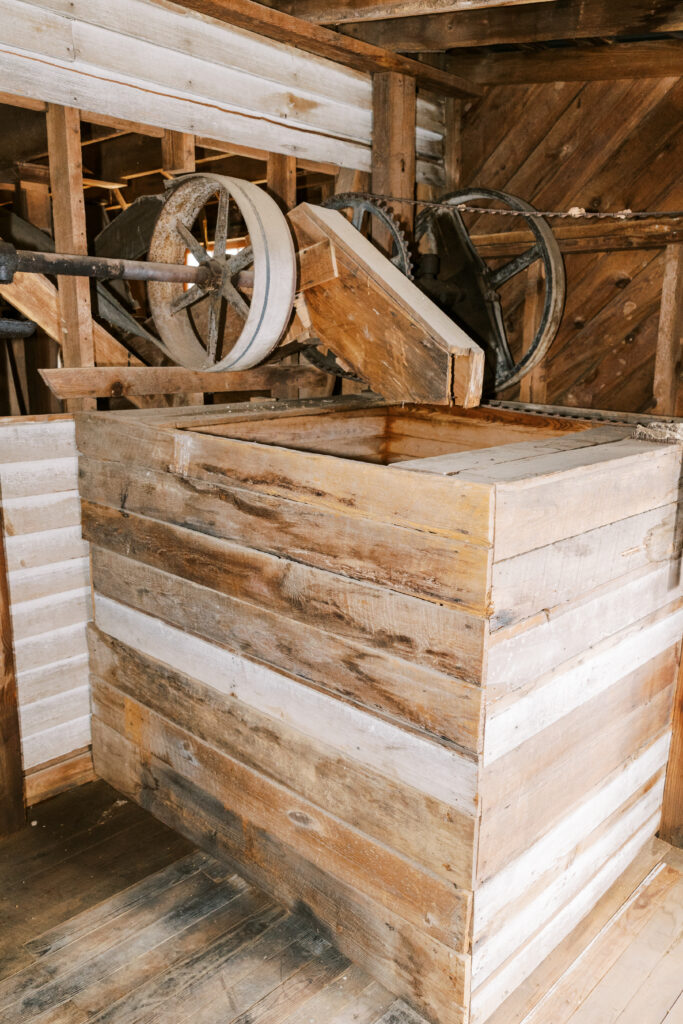The Grist Mill Process
The grist mill, used for grinding corn into cornmeal, was located in the right wing of the building and spanned both the first and second floors. Historians believe the grist mill equipment may have been installed first, with the roller mills added later.
Corn was brought into a storage area just inside the front right-hand door of the mill. Like wheat, each order of corn was kept separate to ensure accurate processing.
Corn sheller
On the first floor, corn was shucked to remove the husks from the cob. The husks were discarded, and the cobs were sent through a corn sheller to separate the kernels.

corn separator
After shucking and shelling downstairs, corn kernels were cleaned and sorted by a separator machine, then weighed. From here, the kernels were either sent directly to bulk bagging or routed toward the mill stones for grinding.

cupped belt line
Grain was transported between floors using cups and chutes. The cups, made of metal or wood, were attached to a moving belt line and carried the grain upward. Chutes relied on gravity to move the grain downward.
The mill used separate systems to handle wheat and corn to ensure each was processed correctly.

the mill stones
The grist mill used two large granite stones, each 8 feet in diameter and 1 foot thick. These stones were arranged horizontally, with one sitting on top of the other. Corn was fed through an opening at the center of the top stone, which remained stationary while the bottom stone rotated. The surfaces of the stones were grooved to crush the corn between them and guide the freshly ground meal to the outer edge. From there, the cornmeal was transported to a storage bin on the second floor, located above the corn bagger.
The bottom stone could also be raised or lowered to control how fine or coarse the milled product would be. For example, the miller adjusted the stones to create a finer texture for corn flour or a coarser grind for cornmeal, which was ideal for making cornbread.

corn bagger
After being ground by the mill stones, cornmeal was transported to a storage bin on the second floor, positioned directly above the corn bagger. Here, cornmeal was usually packaged in 5-pound paper sacks and sold at the Braselton Brothers Department Store under the brand name “Hap-i-Day.”

storage bins
These storage bins played a key role in managing wheat and corn during the milling process.
Wheat was first held in a bin behind a trap door on the first floor. It was then moved along a cupped belt line to a bin located directly above the roller mills, where it was ground into flour. After grinding and separating, the bran (the outer layer of the wheat kernel) was sent back to one of these bins for bagging, while the raw flour traveled to a separate bin after being sifted on the third floor. Self-rising flour was mixed on the first floor and later stored here before being bagged.
Corn followed a similar process. After being shucked, shelled and separated, the corn kernels were transported by a cupped belt line to a storage bin above the mill stones. Once ground, the cornmeal was returned to a bin and stored until it was ready for bagging.


